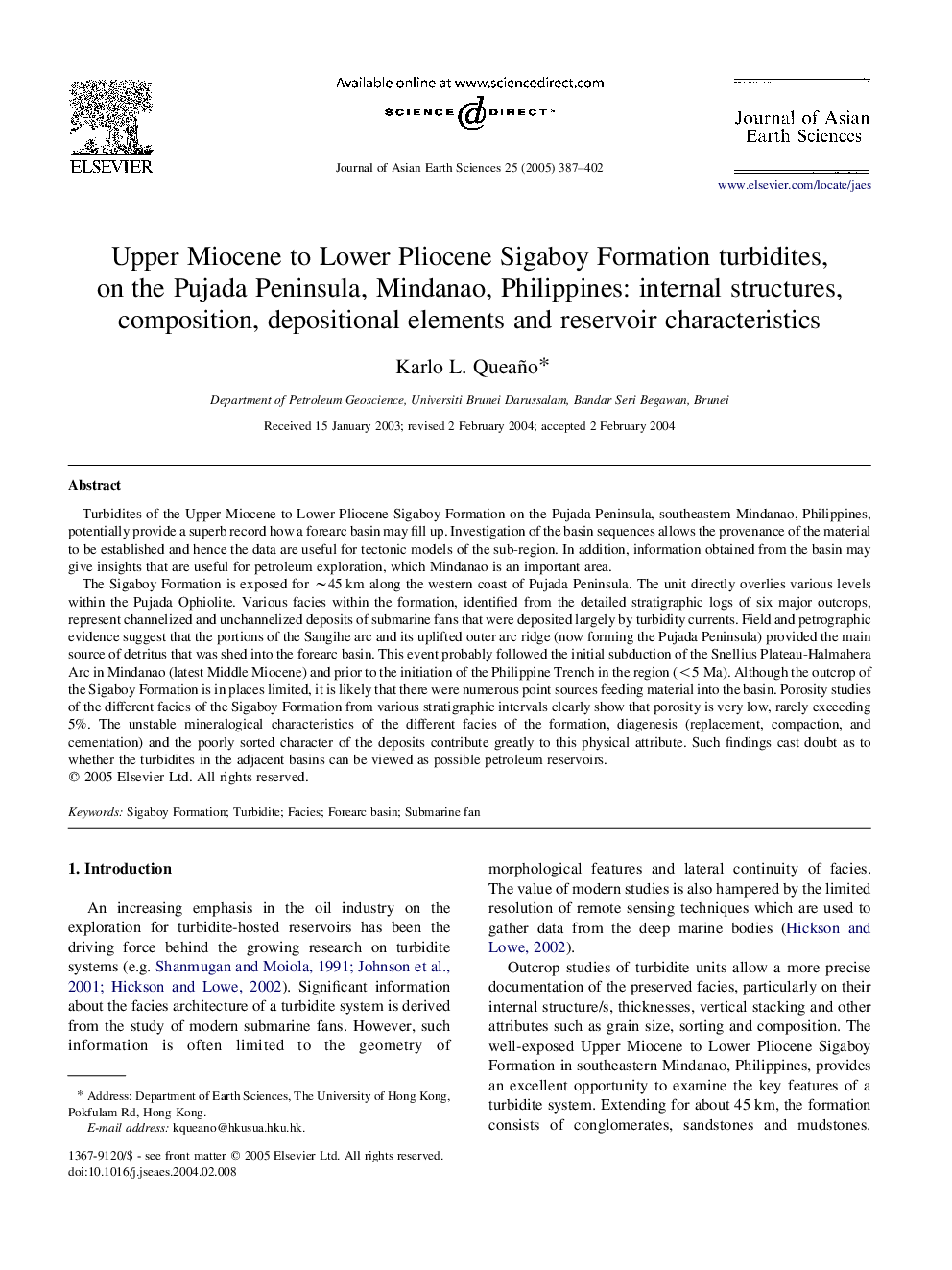| Article ID | Journal | Published Year | Pages | File Type |
|---|---|---|---|---|
| 9535708 | Journal of Asian Earth Sciences | 2005 | 16 Pages |
Abstract
The Sigaboy Formation is exposed for â¼45Â km along the western coast of Pujada Peninsula. The unit directly overlies various levels within the Pujada Ophiolite. Various facies within the formation, identified from the detailed stratigraphic logs of six major outcrops, represent channelized and unchannelized deposits of submarine fans that were deposited largely by turbidity currents. Field and petrographic evidence suggest that the portions of the Sangihe arc and its uplifted outer arc ridge (now forming the Pujada Peninsula) provided the main source of detritus that was shed into the forearc basin. This event probably followed the initial subduction of the Snellius Plateau-Halmahera Arc in Mindanao (latest Middle Miocene) and prior to the initiation of the Philippine Trench in the region (<5Â Ma). Although the outcrop of the Sigaboy Formation is in places limited, it is likely that there were numerous point sources feeding material into the basin. Porosity studies of the different facies of the Sigaboy Formation from various stratigraphic intervals clearly show that porosity is very low, rarely exceeding 5%. The unstable mineralogical characteristics of the different facies of the formation, diagenesis (replacement, compaction, and cementation) and the poorly sorted character of the deposits contribute greatly to this physical attribute. Such findings cast doubt as to whether the turbidites in the adjacent basins can be viewed as possible petroleum reservoirs.
Related Topics
Physical Sciences and Engineering
Earth and Planetary Sciences
Geology
Authors
Karlo L. Queaño,
